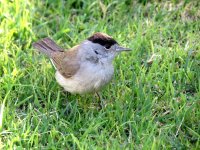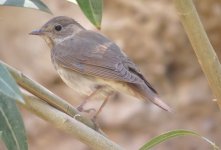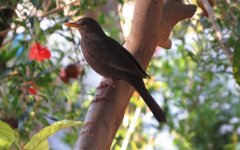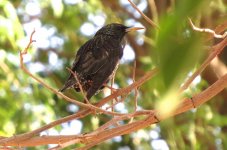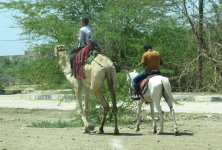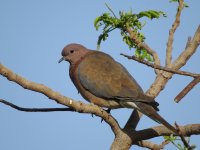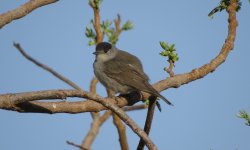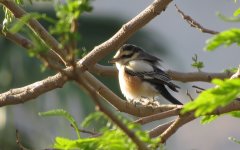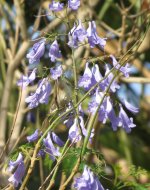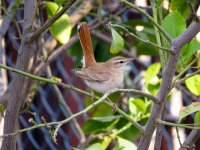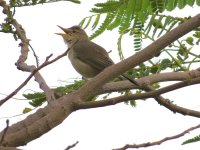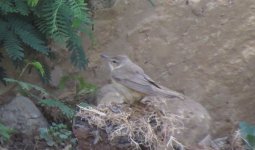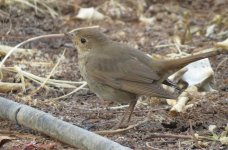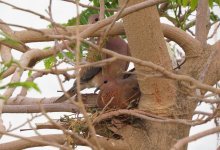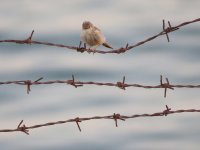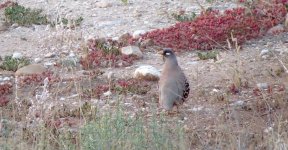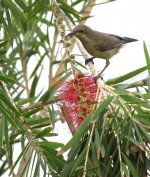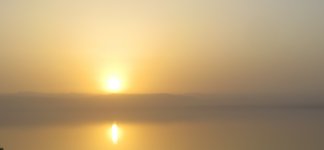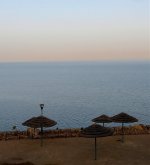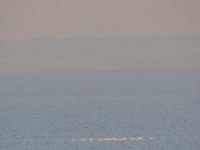MKinHK
Mike Kilburn

After a more than usually grim flight from Hong Kong to Amman via Dubai the taxi from the airport to the Marriott Dead Sea Resort made the journey in an effortless 50 minutes at a bit faster than comfortable birding speed. With no opportunity to stop the only birds that could be added with confidence were a Pallid Swift that flew helpfully alongside the road, and numerous Laughing Doves. There was also a grey shrike sp. and three different unidentified kestrels that wishful thinking would have as Lessers.
As late April is pretty much the peak of the northward spring migration I had high hopes of the hotel – well-vegetated grounds and lots of running water perched above the beautiful but utterly Dead Sea in the bleak desolation of the parched and stony Jordan Valley. I was not to be disappointed. Looking out from my room Pale Rock Martins drifted above the swimming pool, Laughing Doves perched on rooftops and strutted along the edge of the pool with a few House Sparrows. My first migrant was a freshly killed and partially eaten female Blackcap lying on the lawn. Moments later I was distracted by a live bird zipping into the tree next to me, which turned out to be the first of something like 50 Blackcaps which were clearly moving through in substantial numbers. Through the rest of the afternoon I had wonderful views of them in trees, feeding on the ground, around a pile of landscape waste, and drinking from a water feature by the main gate. I thoroughly enjoyed the spectacle, the like of which I had not seen since I was last in Jordan in 2001, when a fig orchard near the headquarters of Wadi Dana had hosted a similar profusion of southward-moving migrants.
A larger and more rufous-coloured bird disappearing into the bushes was the first of what must have been half-a-dozen Thrush Nightingales, and curiously the only other individual I had ever seen had also been in Jordan been at Shaumari Nature Reserve on the same trip. Having read about how skulking they were I was delighted to have terrific views of several different birds feeding on the ground, reminding me at different times of Gray’s Grasshopper Warbler and Rufous-tailed Robin. I was a little surprised how distinctive they were (well, distinctive for a subfusc dusty-grey skulker) with little hint of rufous in the plumage, softly grey-speckled breast and the small but distinctive submoustachial streak. Only one bird – with a slightly more prominent eyering had me wondering about Nightingale, but it disappeared too fast for a confirmation.
Other resident birds included a score or so of Yellow-vented Bulbuls, including an adult feeding two vocal youngsters and eight Palestine Sunbirds – the majority grey-plumaged females, but also a couple of shining black males. I had four different frustratingly brief fly-away views of a male Masked Shrike, but better luck with three European Blackbirds, and a pair of Little Green Bee-eaters and a White-throated Kingfisher that were just across the road from the main gate. Three Fan-tailed Ravens had claimed sole possession of the streetlights and occasionally soared over, distinctively black and short-tailed against the beautiful blue sky. I also had good views of an Eastern Olivaceous Warbler lurking around the water treatment plant outside the gate, and distant views of a buzzard sp. and three more distant large raptor sp. far away above the rock-shattered hills behind the hotel.
Both Red-rumped and Barn Swallows, presumably migrants, stopped to feed over the compound, a classic black-masked, grey-headed Lesser Whitethroat and a solitary Eurasian Starling hinted at the potential for more variety over the coming days, as did a tantalisingly slender falcon sp. that flew a short distance overhead as I watched sun disappear over the mountains across the Dead Sea.
Cheers
Mike
As late April is pretty much the peak of the northward spring migration I had high hopes of the hotel – well-vegetated grounds and lots of running water perched above the beautiful but utterly Dead Sea in the bleak desolation of the parched and stony Jordan Valley. I was not to be disappointed. Looking out from my room Pale Rock Martins drifted above the swimming pool, Laughing Doves perched on rooftops and strutted along the edge of the pool with a few House Sparrows. My first migrant was a freshly killed and partially eaten female Blackcap lying on the lawn. Moments later I was distracted by a live bird zipping into the tree next to me, which turned out to be the first of something like 50 Blackcaps which were clearly moving through in substantial numbers. Through the rest of the afternoon I had wonderful views of them in trees, feeding on the ground, around a pile of landscape waste, and drinking from a water feature by the main gate. I thoroughly enjoyed the spectacle, the like of which I had not seen since I was last in Jordan in 2001, when a fig orchard near the headquarters of Wadi Dana had hosted a similar profusion of southward-moving migrants.
A larger and more rufous-coloured bird disappearing into the bushes was the first of what must have been half-a-dozen Thrush Nightingales, and curiously the only other individual I had ever seen had also been in Jordan been at Shaumari Nature Reserve on the same trip. Having read about how skulking they were I was delighted to have terrific views of several different birds feeding on the ground, reminding me at different times of Gray’s Grasshopper Warbler and Rufous-tailed Robin. I was a little surprised how distinctive they were (well, distinctive for a subfusc dusty-grey skulker) with little hint of rufous in the plumage, softly grey-speckled breast and the small but distinctive submoustachial streak. Only one bird – with a slightly more prominent eyering had me wondering about Nightingale, but it disappeared too fast for a confirmation.
Other resident birds included a score or so of Yellow-vented Bulbuls, including an adult feeding two vocal youngsters and eight Palestine Sunbirds – the majority grey-plumaged females, but also a couple of shining black males. I had four different frustratingly brief fly-away views of a male Masked Shrike, but better luck with three European Blackbirds, and a pair of Little Green Bee-eaters and a White-throated Kingfisher that were just across the road from the main gate. Three Fan-tailed Ravens had claimed sole possession of the streetlights and occasionally soared over, distinctively black and short-tailed against the beautiful blue sky. I also had good views of an Eastern Olivaceous Warbler lurking around the water treatment plant outside the gate, and distant views of a buzzard sp. and three more distant large raptor sp. far away above the rock-shattered hills behind the hotel.
Both Red-rumped and Barn Swallows, presumably migrants, stopped to feed over the compound, a classic black-masked, grey-headed Lesser Whitethroat and a solitary Eurasian Starling hinted at the potential for more variety over the coming days, as did a tantalisingly slender falcon sp. that flew a short distance overhead as I watched sun disappear over the mountains across the Dead Sea.
Cheers
Mike




